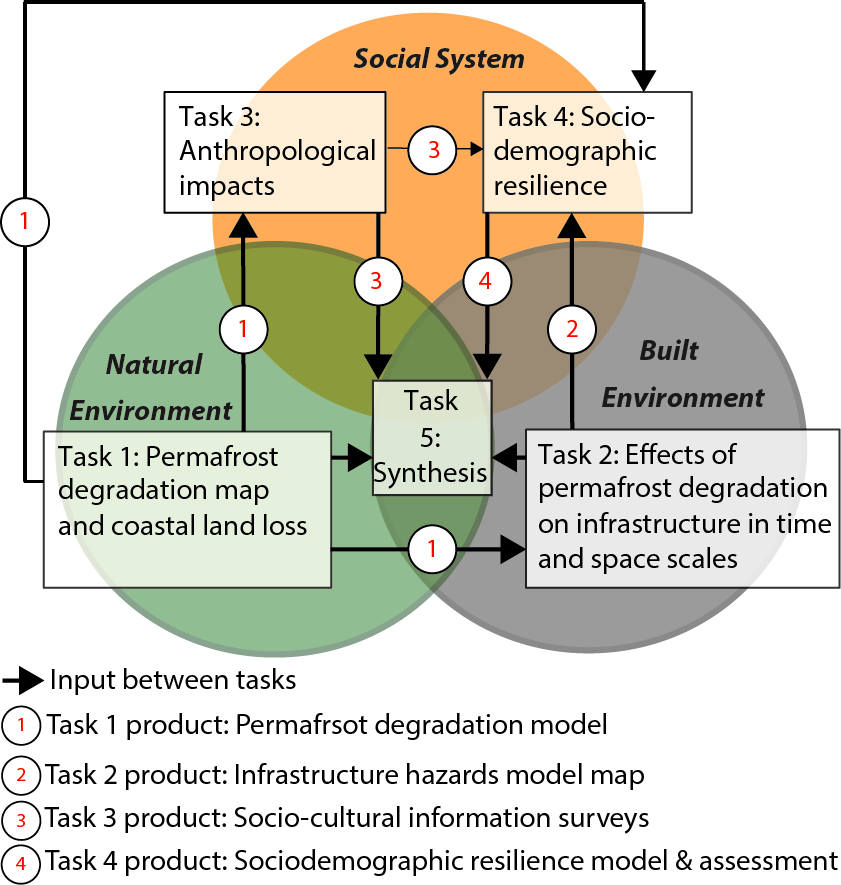The goal of the NNA PIPER project is to understand the complex interrelationships and mutual impacts of continued climate change in the Arctic among the following components: permafrost degradation and coastal erosion, civil infrastructure and development, and community well-being and sociodemographic and cultural resilience. Results from this study will be used to formulate a holistic and predictive model that will aid future adaptation of social systems and the built environment to the unprecedented natural environmental changes in the Arctic.
The PIPER project includes five research tasks as shown in Figure 1:
- model and predict the rate, magnitude, and mechanisms of permafrost degradation and associated land loss within Alaska’s North Slope Borough communities;
- develop an infrastructure hazards map of the northern Alaskan coastal region under the effects of permafrost degradation and coastal erosion;
- identify and understand anthropological and cultural impacts of permafrost degradation and coastal erosion on coastal communities;
- model the impacts of infrastructure disruptions on the sociodemographic resilience and population adaptation in coastal communities; and
- predict the adaptations of infrastructure and sociodemographic and cultural resilience of communities to future permafrost degradation and coastal erosion.

Figure 1. Research strategy and integration of tasks
Watch the 4.5-min Youtube video on the NNA project introduction: Resilience and adaptation to the effects of permafrost degradation induced coastal erosion: https://www.youtube.com/watch?v=jKuiubWAivA&feature=youtu.be